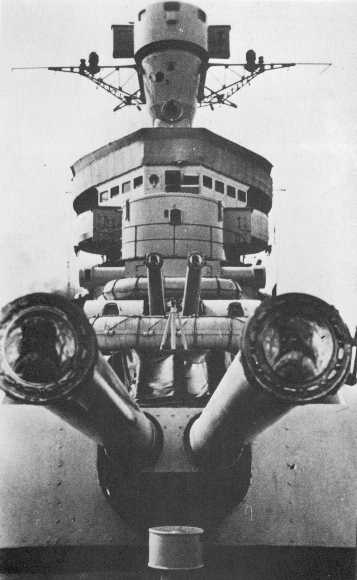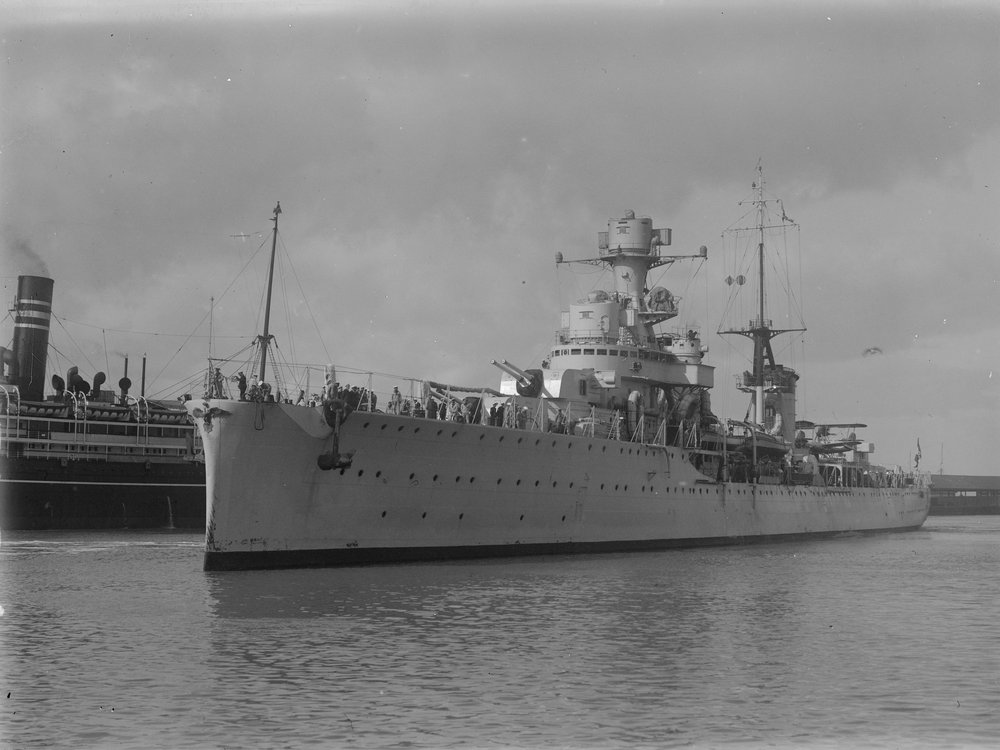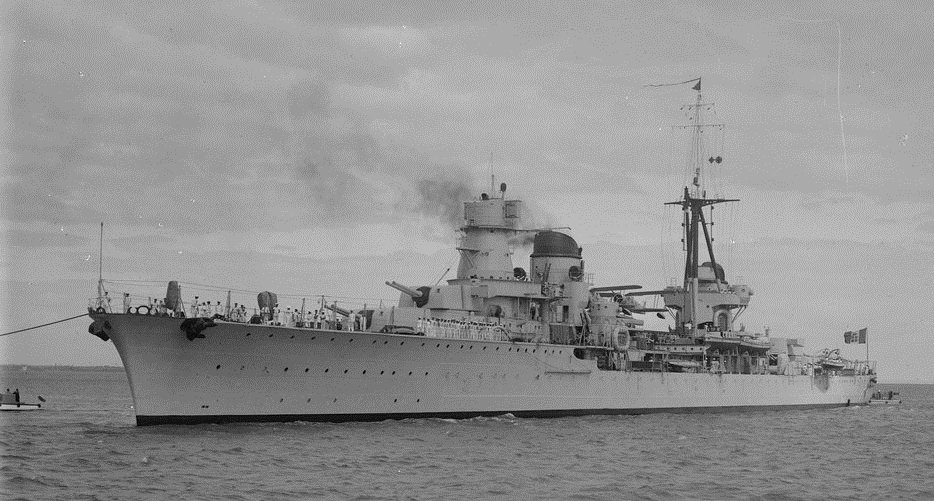|
As in many Italian twin mountings, these guns were mounted closely together which reportedly caused some interference problems. The mountings in the 1st and 2nd groups (Alberico da Barbiano and Luigi Cadorna classes) were too lightly built for the recoil forces created by the very high muzzle velocities of these weapons. Construction of the Ansaldo guns seems to have varied from gun to gun. One drawing of a relined gun shows A tube, jacket and a very heavy breech ring screwed to the jacket with a square thread, and a relatively thick taper liner with a retaining bush screwed into the rear end of the jacket. The OTO guns used a thin, loose liner of the Pittoni type, A tube, full length jacket and breech ring. All guns used sliding horizontal breech blocks. Historical note: These cruisers were named after famous leaders ("Condottieri") of mercenary bands in Renaissance Italy. |

Light Cruiser Bande Nere (1st Condottieri Class) |

Bow Turrets of Light Cruiser Bartolomeo
Colleoni (1st Condottieri Class)
|

Light Cruiser Armando Diaz (2nd Condottieri
Class) in October 1934
|

Light Cruiser Raimondo Montecuccoli (3rd
Condottieri Class) in 1938
|